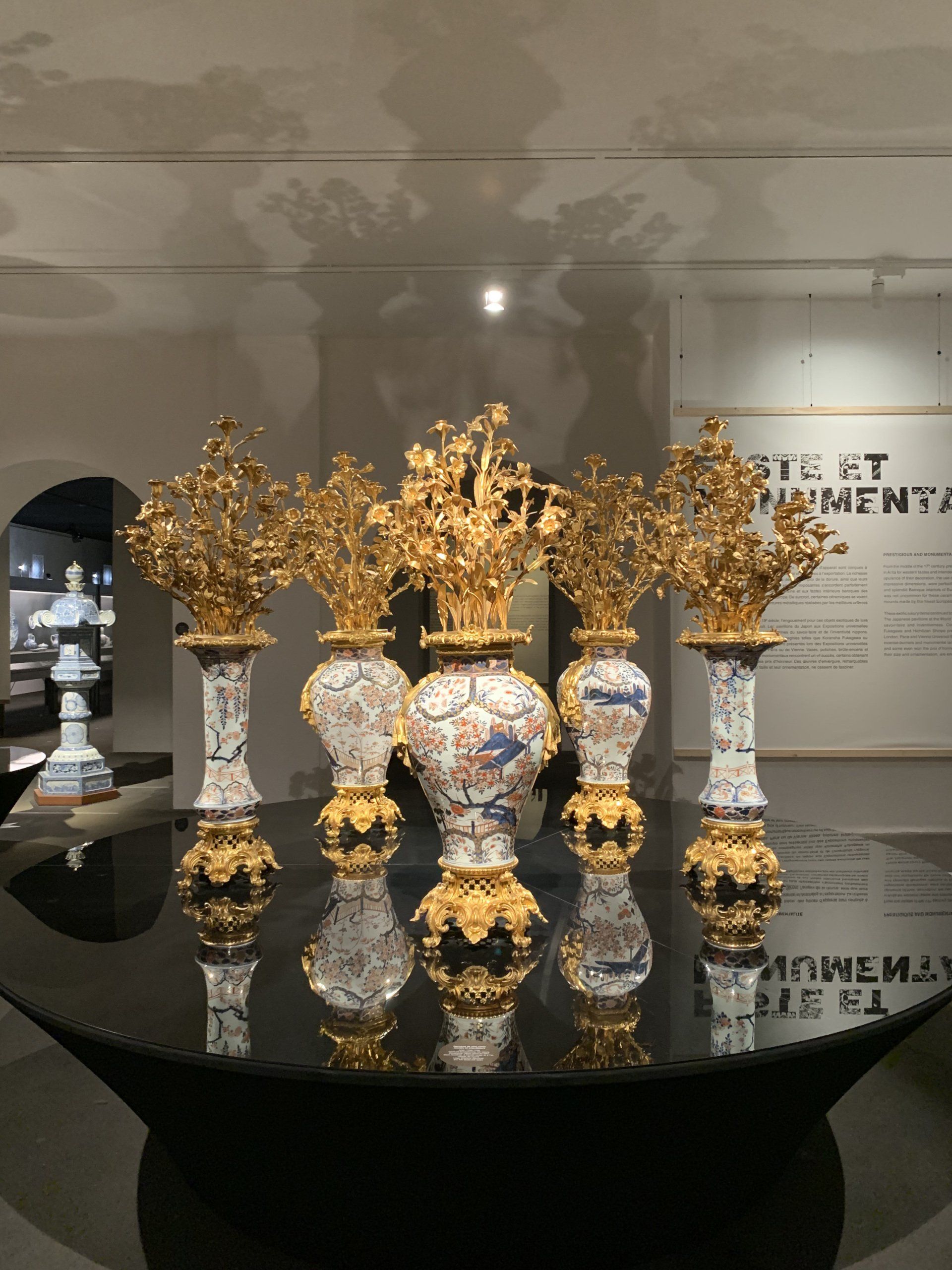Blog Layout
"The art world".
art@biancafrolich.com
Japanese Ceramics

Japanese Ceramics are incredibly undervalued compared to Chinese Ceramics. In the western world most people wouldn't see the difference.
What's the reason for this huge Market gap? Even Antiques is a market of supply and demand. There are certain exceptions.
The demand for Chinese Porcelain is immense. Especially authentic , ancient, rare and valuable pieces. The demand for Japanese ,
is less, so prices are extremely lower compared to similar quality pieces from its counterpart China.
I would like to gives you a small insight into the timeframe of different Japanese styles and time-frames.
PRESTIGIOUS AND MONUMENTAL From the middle of the 17th century, prestigious Japanese pieces were designed in Arita for western tastes and intended for export. The richness and opulence of their decoration, the use of gilding and their increasingly impressive dimensions, were perfectly suited to porcelain cabinets and splendid Baroque interiors of European courts and palaces. It was not uncommon for these ceramics to be topped with metal mounts La made by the finest European goldsmiths and silversmiths These exotic luxury items continued to fascinate until the 19th century. The Japanese pavilions at the World Fairs showed off the country's savoir- faire and inventiveness. Companies such as Koransha Fukagawa and Hichozan Shinpo presented their products at the London, Paris and Vienna Universal Exhibitions. Vases, lidded jars, incense-burners and monumental lanterns were hugely successful and some even won the prix d'honneur. These works, notable for their size and ornamentation, are endlessly enchanting.
ARITA Porcelain has been produced in Japan since the early 17th century. The technique was developed in the Arita region, on the island of Kyūshū, where it had been introduced by Korean potters. In the middle of the 17th century, when East India Companies' traders were no longer able to buy porcelain from Jingdezhen because of civil war in China, they turned to Japan. Specific forms and decoration were commissioned for the Western market. Arita potters sometimes copied them from Chinese or European models. The painted designs are extremely varied: as well as the blue and white of the kraak or Transition style, the shimmering polychrome motifs of Imari, Kakiemon and Nabeshima wares appeared. Production methods of the latter were a closely guarded secret. In turn, Japanese style influenced Chinese and European ceramics.
FIGURINES In the 17th and 18th centuries, the Arita workshops were already producing porcelain figurines partly for export to the West and European palaces. These exceptional pieces were joined in the 19th century by smaller objects often designed as souvenirs for the first tourists of the Meiji period (1868-1912). Several groups from the period illustrate the daily life of contemporary Japan, comparable to a photographic instant. These fragile and popular objects have become, at the beginning of the 21th century, extremely rare curiosities.
SATSUMA From the 17th to the beginning of the 19th « E century, 'Satsuma' was used as a rather ué imprecise term to designate all the ceramic sa production of the ancient estate of the same se name, located on the island of Kyūshū. Initially reserved for feudal aristocracy and upper la ac echelons of samurai, the white ceramic clay of Satsuma was decorated with polychrome designs from the 18th century. The style, ivory in colour with rich designs emphasised in gold, soared in popularity the following century thanks to its large-scale commercialisation. From the 1860s, the mysteries of this aesthetic S- style, showcased in particular through the World Fairs, aroused the interest of Western markets. The arrival of the Meiji period (1868) and its opening to the outside world relations, led to an increase in the number of sites producing in the Satsuma style (Kyōto, Ösaka, Yokohama, Tōkyō, S etc.) and favoured the development of pieces principally for export.
THE MEIJI PERIOD The fall of the shogunate and its feudal system in the mid-19th century led to the birth of modern Japan and radical changes. With the advent of the Meiji period (1868-1912), the country expanded its international trade which had become a major priority of the government. Artisans and craftsmen, deprived of the support of the great houses, were enthusiastic participants. Ceramic production in the Meiji period was extensive and extremely diverse. Exceptional pieces joined more modest mass-produced objects often in the same factory. Kutani, Seto, Yokohama, Banko, Yokkaichi or Nagoya were centres of particular styles and techniques. There are still wide gaps in knowledge about the history of many of the workshops – actors in this creative exuberance – which remains to be written ....
SETO/YOKOHAMA Production in the town of Seto was on an industrial scale mainly in order to supply the growing numbers of painting workshops - etsuke – in Tōkyō, Kõbe, Nagoya and Yokohama. Services were decorated with floral themes, lively landscapes, human figures, legends and other Japanese subjects. At the start of the Meiji era, when Japan reopened to the outside world, the port city of Yokohama became a nerve centre for export activities to Europe and the United States. Potters began to adopt a formal vocabulary in accordance with Western tastes and so created tea and coffee services combining modernity and tradition. Certain objects were not customary in Japan : indeed, cups with handles, milk jugs and sugar bowls were neither used for everyday consumption of drinks nor for tea ceremony or chanoyu.
Best Wishes,
Bianca Frölich
Pictures are taken at the Ariane Ceramic museum in Genève Swiss.



